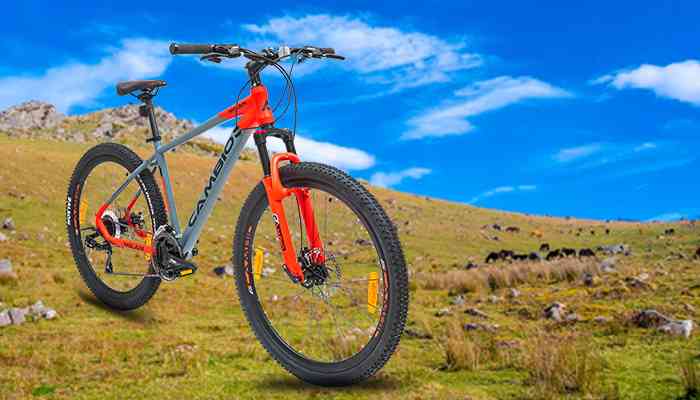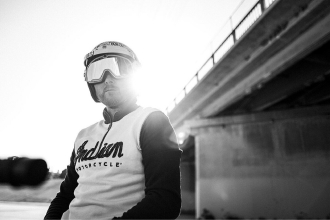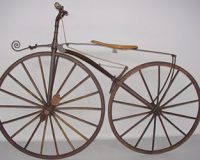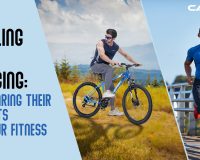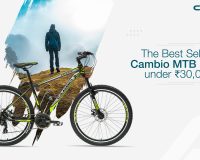Despite their rising popularity, many people still consider fat bikes a novelty. These unusual-looking contraptions get a lot of attention on the trail or outside the garage. Fat bikes are distinguished from conventional two-wheeled bicycles by their tires. When people have recovered from the initial shock of seeing such a ludicrously huge tire, the topic of fat bike tire pressure frequently comes up. Since the pressure is so low, people’s reactions are frequently unexpected.
Can Read More:
- 8 Useful Benefits of Mountain Biking
- 7 Benefits of Cycling in the Rain
- Mountain Bike Training Plan
- Mountain Biking Must Adventure in 2024
- Mountain Bike Riding’s Benefits
Of course, using such low pressures has benefits. They are also prone to change depending on riding situations while remaining low. Summer and winter fat biking is similarly affected by this. Fat bikes require such low pressure that a standard floor pump will have trouble reading them.
Only our tires come into touch with the ground while riding. Our tires impact how our bike feels more than any other costly ‘must-have’ accessory! But, how do you determine the optimum tire pressure for your mountain bikes? It’s time to check your tire pressure!
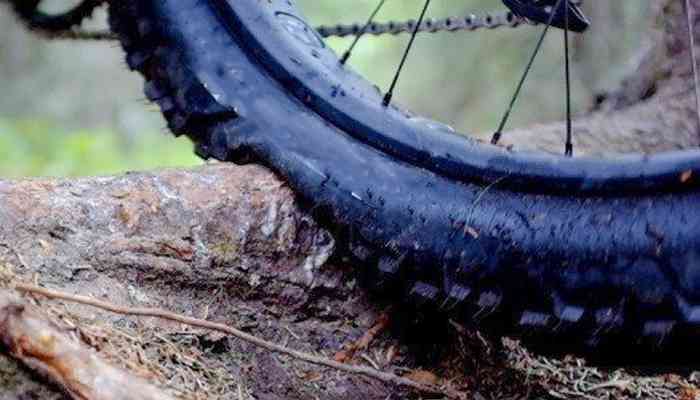
What is the proper tire pressure for Mountain biking?
Because the optimum tire pressure for mountain biking varies depending on numerous variables, such as the kind of bicycle you are riding, the weather on the route, and your personal preferences, there is no one-size-fits-all answer to this question. However, the average mountain bike tire pressure is between 30 and 35 psi. For best results, consult your bike’s owner’s manual or the manufacturer’s website to find the recommended tire pressure for your specific model. You may also want to try different pressures to find out what suits you best. Always check your tires before leaving on a ride, and if you lose traction or are uncomfortable on the trail, adjust them accordingly.
Why is the tire pressured so little on a fat bike?
The tire pressure on a fat bike is low because the tires are so big. The larger the tire, the less pressure it needs to support the weight of the bike and rider. Fat bikes typically have 4 inches wide or wider tires, much wider than a standard mountain bike tire. This width allows the tire to distribute the weight of the bike and rider over a larger surface area, which reduces the pressure required to keep the tire from collapsing.
Let’s compare the pressures in a few common tire types to help illustrate:
| Mountain bike tires: | Fat bike tires: |
| Width: 2.3-2.5 inches | Width: 4.0 inches |
| Pressure: 30-35 psi | Pressure: 5-10 psi |
As you can see, the pressure required to support a fat bike is much lower than that of a mountain bike. Due to the fact that fat bike tires are considerably larger, they may spread the weight of the bicycle and rider across a broader area. You can buy a mountain bike in India with fat bike tires.
What does this imply for fat Bike tires in Mountain bikes?
This means that the optimum tire pressure for mountain biking on a fat bike is lower than that of a standard mountain bicycle. The best tire pressure for mountain biking on a fat bike is between 5 and 10 psi. This low pressure allows the tires to grip the trail better, providing more traction and stability on the trails.

What are some benefits of riding with low tire pressure?
When you buy mountain bikes online, you will often see that the recommended tire pressure is lower than what you would use on a road bike. Low tire pressure provides better traction on uneven surfaces, such as dirt, sand, or rocks. Low tire pressure also absorbs shocks from bumps in the trail, which makes for a more comfortable ride. Riding with low tire pressure has several benefits.
Smoother Rides: Because low tire pressure absorbs shocks better, you will experience a smoother ride on rough terrain.
Better Traction: Low tire pressure increases traction on loose surfaces, such as sand or gravel.
Increased Control: With low tire pressure, you will have increased control over your bike, which can be helpful when riding on challenging trails.
Adjusting pressures to match the circumstances
Soft snow environments require distinct traction/float qualities than hard-packed snow, and the same is true for sand biking versus hard-packed snow. On asphalt, the motorcycle is ridden. Swapping tires with different tread patterns or adjusting tire pressure are two techniques to modify the traction characteristics of your fat bike tires. We’re focusing on the most convenient and cost-effective of the two approaches by adjusting tire pressure here.
Soft conditions like sand or fresh snow require a different approach to tire pressure than harder surfaces like asphalt or frozen packed snow. The lower the tire pressure, the wider the contact patch of your tire will be. This gives you more traction as there’s more surface area in contact with the ground. You’ll want to start by airing down your tires as much as possible while maintaining enough pressure to avoid pinch flats. 10 PSI is a good starting point for soft conditions.
You’ll want to use a higher tire pressure for hard-packed snow or icy conditions. For these circumstances, 20 PSI is a good place to start. The greater pressure will give you a quicker ride since it will help prevent your tires from sinking into the snow. Tire pressure should be reduced as the terrain gets softer. The harder the terrain, the higher the tire pressure should be. This will help you get the most traction and the best ride possible.
When to Use Different Tire Pressure
There are a few different types of terrain that you might encounter while riding your fat bike. Each terrain type requires a different tire pressure to get the best ride possible. Sand: The best tire pressure for sand is 10 PSI. This low pressure will help your tires grip the sand and prevent you from sinking in.
Snow: The best tire pressure for snow depends on the type of snow. Low tire pressure of 10 PSI is best for soft, fresh snow. Higher tire pressure of 20 PSI is best for hard-packed snow or icy conditions.
Asphalt: The best tire pressure for asphalt is 20 PSI. This high pressure will help you go faster and prevent your tires from sinking into the asphalt.
Rocks: The best tire pressure for rocks is 30 PSI. This high pressure will help your tires grip the stones and prevent you from slipping.
To Sum It Up
The best mountain bikes provide a fun way to exercise while spending time outside. Before heading out on a ride, it is essential to check your tire pressure and adjust accordingly for the conditions of the trail and your personal preferences. If your mountain bikes have fat tire, keep in mind that they require different tire pressure than a regular bike. Check Cambio if you want to buy mountain bike India online.

